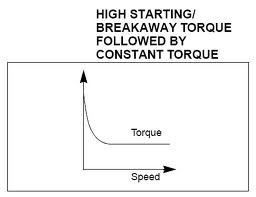Variable Speed Drive Selection - Getting It Right (Part 1)

It is that age old dilemma – You have got pricing for two variable speed drives from different manufacturers but how do you know you’re comparing “Apples for Apples” and how do you make sure the VSD you purchase will actually do the job!
VSD manufacturers complicate the situation further by using different terminology and marketing “gobbledy gook” to describe their products.
Believe it or not, this is actually a very simple problem to overcome. It comes down to understanding the application and then selecting a VSD that has the specifications to suit. This series of articles is designed to try and help clarify the mysteries of VSD selection.
In this article we will cover the importance of understanding the application and the impact of ambient temperature environment.
Application Type
As VSD manufacturers we broadly categorise all applications into two types – they are constant torque or variable torque.
Constant torque loads – a constant torque load is an application where the torque requirement, and motor current, is the same right through out the speed range. An example of this type of load is items such as conveyors, positive displacement pumps, crushers, mills, sifters.
These loads often require high break away torque so a variable speed drive with a minimum of 150% overload capacity for 60 seconds is important. It is this overload current capacity that makes sure the load has sufficient torque to accelerate away correctly. VSD manufacturers typically refer to this as a “heavy duty” rating.

Variable torque loads – a variable torque load is an application where the torque requirement, and motor current, are low at lower speeds and high at higher speeds. An example of this type load is centrifugal and axial pumps or fans.
These loads do not require high break away torque so a variable speed drive with a minimum of 110% overload capacity for 60 seconds can be utilised. VSD manufacturers typically refer to this as “pump”, “fan”, “light”, or “normal” duty.

As you can see the selection of the correct rated VSD for the correct application is imperative. VSD manufacturers approach their product design for these different applications in a number of ways. As you can imagine a “heavy duty” rated VSD carries an overload capacity that is not required for “light duty” applications. To supply a “heavy duty” VSD for a “light duty” application would impose a commercial penalty on “light duty” customers. On the other side of the coin - using a “light duty” VSD on a “heavy duty” application may result in the application not operating correctly due to insufficient torque resulting in the motor stalling or not braking away under load.
This is why manufacturers make a separate heavy duty or industrial VSD range, and a light duty or HEVAC/Pump range. Another solution to this problem is for a manufacturer to release their product range with two different ratings and the customer selects the correct model on application type. This second solution is very common as it has the benefit of common spare parts and stock. This is the method employed in the SD500 and SD750 ranges of VSD.

The SD500 selection table clearly showing “heavy load” and “normal load” ratings, overload capacity, and temperature ratings.
Temperature Ratings
All variable speed drives are designed to operate in a maximum ambient air temperature. This temperature rating will be stated in the VSD specification and is the maximum temperature that the VSD is capable of delivering its continuous full load current rating at without damage to the electronic components within the unit.
All VSDs have losses. A general rule of thumb is that a VSD will dissipate approximately 10 - 13 watts per amp passing through the unit. These losses manifest as heat which comes from the rectifier and IGBT stage of the VSD. This heat “escapes” from the VSD via the heatsink.
A VSD with a lower maximum temperature rating has less ability to dissipate the heat generated in a higher ambient temperature - greatly increasing the chance of degradation and premature component failure for the semi-conductors and capacitors within the VSD if the maximum rated ambient air temperature is exceeded. This type of damage may not result in immediate failure but reduced lifetime expectancy of the unit is inevitable.
The ambient air temperatures in NZ are not excessive but in many places in the peak of summer the temperature within switchrooms, switchboards, MCCs, and pump sheds can often exceed 400C. Selection of a VSD that can cope with these temperatures is critical.
Power Electronics is here to assist you in the correct selection of your VSD for your application. We don't expect you have to do this on your own - we can help you.
Get in touch now to find out more.
See part two here.
